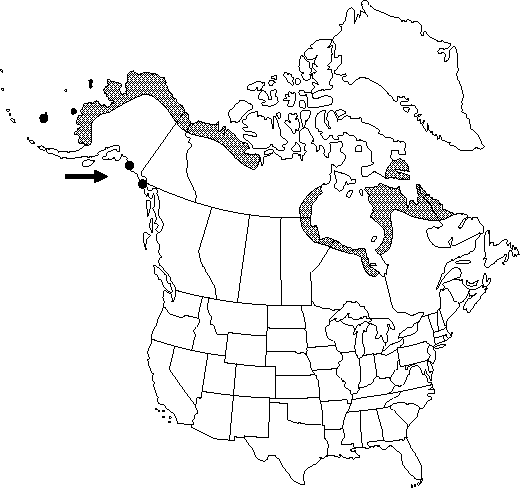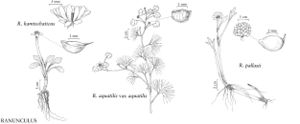Ranunculus pallasii
Animadv. Bot. Ranunc. Cand. 1: 15. 1819.
Revision as of 21:25, 16 December 2019 by FNA>Volume Importer
Stems creeping or floating, rooting nodally, glabrous, not bulbous-based. Tuberous roots absent. Basal leaf blades linear to obovate, undivided or 3-lobed, 1.5-3.6 × 0.3-2 cm, lobes lanceolate or elliptic, margins entire, apex rounded to acuminate. Flowers: receptacle glabrous; sepals spreading, 6-10 × 4-7 mm, glabrous; petals 7-11, white or pink, 8-13 × 3-6 mm. Heads of achenes globose or hemispheric, 5-12 × 9-15 mm; achenes 4.2-5.2 × 2.4-3.2 mm, glabrous; beak persistent, lanceolate, straight or curved, 1-1.2 mm. 2n = 32.
Phenology: Flowering summer (Jul–Aug).
Habitat: Shallow water of bogs and pools in muskeg and tundra
Elevation: 0-700 m
Distribution

Man., Nfld., N.W.T., Ont., Que., Yukon, Alaska, Eurasia.
Discussion
Selected References
None.
Lower Taxa
None.
